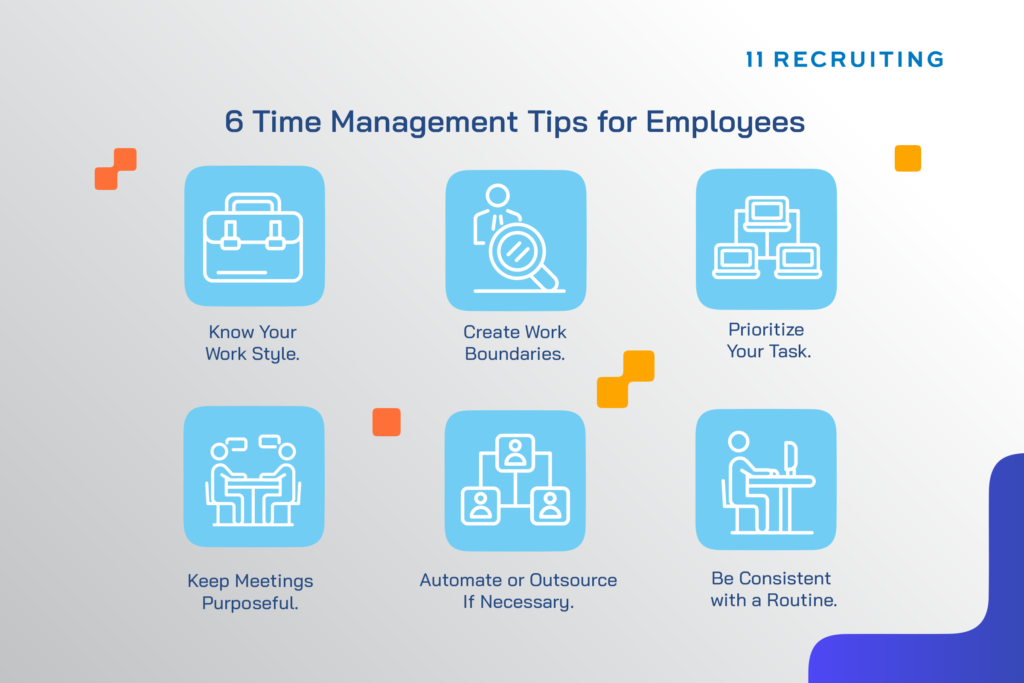
A recent study found that 77% of companies anticipate the preferred work model since the post-pandemic era is the hybrid workplace model. This workplace model has gained an adoption rate due to the mix of remote and in-person work that gives employees higher autonomy with a better work-life balance.
Although some employees are trying to get comfortable with this type of work environment, a lot of importance has been placed on time management as it can be tricky to manage time while effectively juggling multiple work venues. This article will discuss how employees can achieve efficient time management with a hybrid work schedule.
What is a Hybrid Workplace?
It’s a work schedule that combines working from home, office-flexible, and in-person office-based work. Recent research shows that 99% of employees enjoy working from home because of the flexibility, no commuting cost, and having more time to spend with friends and family. In comparison, 95% of employees sometimes want to return to the office to connect with team members and foster team building and collaboration, and that is where a hybrid workplace now comes into play.
In a hybrid workplace model, employees can find a balance between working at the office and remotely based on their position and preferred work-life balance. This work schedule empowers teams to decide how many days a week they come into the office and the job responsibilities they will do when they are remote.
Why is a Hybrid Work Model Important?
The core importance of a hybrid work schedule is the benefit of unparalleled flexibility. With this level of flexibility, the hybrid workplace model allows employees to build work around their life rather than creating a life around work, and this helps give them greater control of their work-life balance.
For organizations, the hybrid workplace opens up opportunities for candidates to work from where they are. It also gives them access to a wide range of talent pools without limiting diversity or inclusion. A hybrid work schedule also increases productivity and job satisfaction and reduces employee commute costs.
Frequently Asked Questions
Why is time management critical in a hybrid workplace?
Adopting time management in a hybrid work schedule helps to enhance your productivity and performance with proper use of your energy without compromising the quality of work for the day’s task. Also, with time management, you can allocate a specific time and focus on essential tasks in your hybrid schedule depending on the level of complexity of the job, the level of noise or interruption that may affect your productivity, and the level of flexibility and accessibility you get.
Time management in a hybrid workspace also helps you stop procrastinating on tasks and reduces the stress and anxiety that comes with work overload. In the end, you get an improved quality of life, more time for leisure, rest, and personal improvement.
What’s the difference between a hybrid workplace and a remote workplace?
In a remote workplace setting, employees can work from anywhere, including working from home, from a coffee shop, or in a co-working area. They don’t have to worry about co-workers’ distractions or commute stress. However, the hybrid workplace model allows employees to function remotely, on-site, and on the go. In a hybrid work model, employees and teams can switch between days to be in the office for a specific time frame.
How can I adjust to a hybrid work schedule?
Hybrid work redefines collaboration, teamwork, and team building, so it’s essential to start by choosing the right tech tools to keep communication in check. Also, when adjusting to a hybrid workplace, you must discuss work expectations and schedules circling in-office days, meetings, and activities with your employer. Mirroring your office space while working from home will also help you adjust quickly to a hybrid work schedule.
6 Time Management Tips for Employees
While hybrid work has certain perks, managing time while juggling multiple work sites can be tricky. For most people, the hybrid model can be twice as stressful because it continues to blur lines between work and home, and you find out that you’re working more hours for your organization. However, as a hybrid employee, you need to learn how to set and maintain clear boundaries, so here are some time management tips for employees while adopting the hybrid work schedule.

Know Your Work Style.
Knowing your work style will allow you to establish a consistent schedule and manage your time. So, to manage your time in a hybrid work schedule, start by being aware of what time of the day you’re best active when you’re at home, then determine the days commuting to an on-site location would be best for you, also decide which task are best accomplished at home and are done best at the office. Knowing your work style will help you properly create work and home routines and be in the right place at the right time to optimize your energy for productivity and effective performance.
Create Work Boundaries.
Sometimes, it’s unrealistic to sit in front of your desk for 6-7 hours straight, especially during remote working – If that happens, the result will be burnout, stress, fatigue and unproductivity. So, another time management tip for employees adopting a hybrid workplace is to create healthy work boundaries, especially while working from home. Set work hours that suit your needs and communicate that with your manager so you don’t have to work overtime. And this also means adding regular breaks throughout the day.
Prioritize Your Task.
To effectively manage your time with a hybrid work schedule, it’s crucial to prioritize and define what constitutes an “emergency task” versus tasks that can wait until the next business day. You can adopt a time management matrix to help establish this agreement to make you more productive and less burnt out.
For your hybrid work schedule, a time management matrix like Covey’s time management matrix will help you reduce multitasking and focus on one task at a time. You can split your workload into quadrants, from the less important ones to the urgent ones. In the end, you have control over how many hours and energy you spend on being productive.
Keep Meetings Purposeful.
To effectively manage time in a hybrid workplace, figure out the tasks that need physical meetings and the ones you can communicate instantly and asynchronously. Poorly planned meetings can be time-wasters in organizations, and sometimes, some physical meetings are truthfully unnecessary if they can be done via other digital platforms like slack or discord. So if your hybrid work schedule includes having to commute to an on-site office, make sure to keep your meeting purposeful.
Automate or Outsource If Necessary.
While some tasks are unavoidable, many of them can be partly automated or completely outsourced. For your hybrid workplace, adopt intelligent technologies to help your employees automate some tasks that are often repeated daily. Also, as a hybrid employee, there’s no need for you to be a one-person show — you need to let other people carry some of the load. So, in your hybrid work schedule, delegate or outsource small tasks to someone capable of handling the job well, so you can make the most of the time you have to do other deep work.
Be Consistent with a Routine.
Your hybrid workplace must have a consistent routine of when you should be present on-site and when you should have WFH days. And while you stay consistent with these routines, you should measure your productivity levels by the hours you put into it but rather by the outcomes. You’ll be more productive with your time and energy if you start paying attention to how much you can achieve in a day rather than how many things you can take on in a day.
To sum up,
Ging hybrid comes with many perks, but if not managed well, you can overwork or underwork yourself in your job role – both having enormous consequences on your job performance, productivity, and work-life balance. So, to manage your time well during your hybrid work schedule, you should know what work style works best for you to keep you productive, have clear and visible boundaries, prioritize your task and set daily work goals.
You also have to stay consistent with a routine, keep a work meeting purposeful and automate or outsource any task that may drag you behind the work schedule. Remember, there is no one size fits for time management when you’re working hybrid. You must test and retest what time management tool works best for you!
Need more help with time management for employees working hybrid? Reach out to us on our service page.

